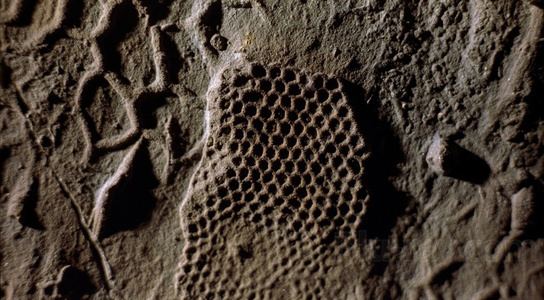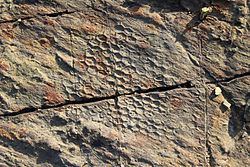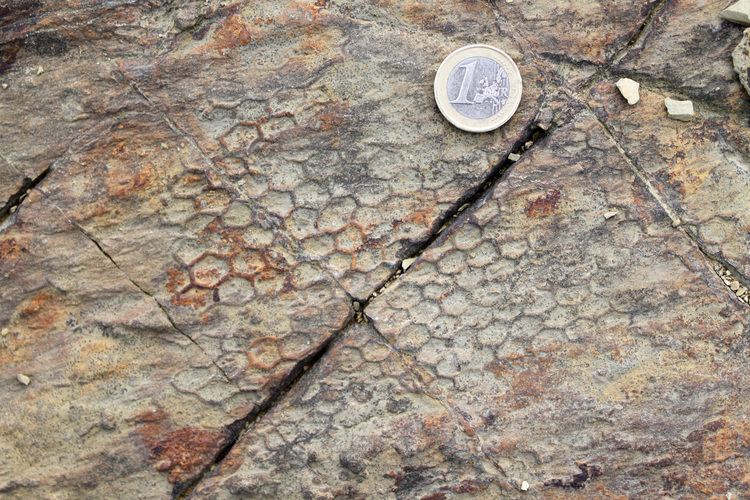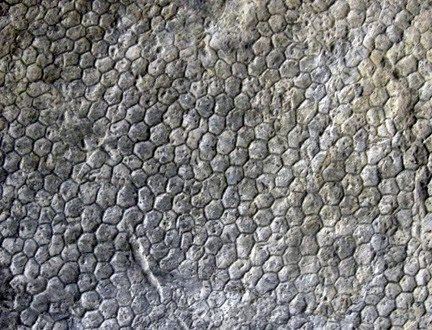Kingdom Animalia | Rank Genus | |
 | ||
Similar Nereites irregularis, Paleodictyon nodosum, Zoophycos, Thalassinoides, Chondrites | ||
Paleodictyon is a pattern, usually interpreted to be a burrow, which appears in the geologic marine record beginning in the Precambrian/Early Cambrian and in modern ocean environments. Paleodictyon were first described by Giuseppe Meneghini in 1850.
Contents
- Paleodictyon 3d
- Description
- History of the study
- Hypotheses about the origin
- The search for a living animal
- References

Paleodictyon 3d
Description

Paleodictyon consist of thin tunnels or ridges that usually form hexagonal or polygonal-shaped honeycomb-like network. Both irregular and regular nets are known throughout the stratigraphic range of Paleodictyon, but it is the striking regular honeycomb pattern of some forms such as P. carpathecum and P. nodosum which make it notable and widely studied.

Individual mesh elements may be millimeters to centimeters, usually from 1-1.5 to 2-3 cm, and entire mesh patterns can cover areas up to a square meter. The edges or threads that make up the mesh are usually cylindrical or ellipsoid in cross-section, and some forms have vertical tubes connecting the mesh upwards to the sediment-water interface. Dolf Seilacher proposed in 1977 that it may be a trap for food, a mechanism for farming, or a foraging path. Alternatively, it has been suggested that it may be a cast of a xenophyophoran protist.
History of the study

Much modeling work has been done on Paleodictyon. Roy Plotnick, trace fossils researcher at University of Illinois at Chicago, modeled the form as resulting from the iterative modular growth of an unknown organism. Garlick and Miller modeled it as a burrow with a relatively simple burrow algorithm.
Hypotheses about the origin

The question is whether these patterns are burrows of marine animals such as worms or fossilized remains of ancient organisms (sponges or algae). Observations on Paleodictyon using Euler graph theory suggest that it cannot be an excavation trace fossil, and that it must therefore be an imprint, body fossil, or be of abiotic origin.
The search for a living animal
The IMAX film Volcanoes of the Deep Sea describes the search for a living animal that produces the Paleodictyon, using the deep-water submersible DSV Alvin near volcanic vents that lie 3,500 metres (11,500 ft) underwater in the Mid-Atlantic Ridge. They found and took samples from many of the Paleodictyon nodosum honeycomb burrows, however no creatures were found in any of them. They theorized that the burrows were being used for cultivating/trapping bacteria by whichever creature created them.
